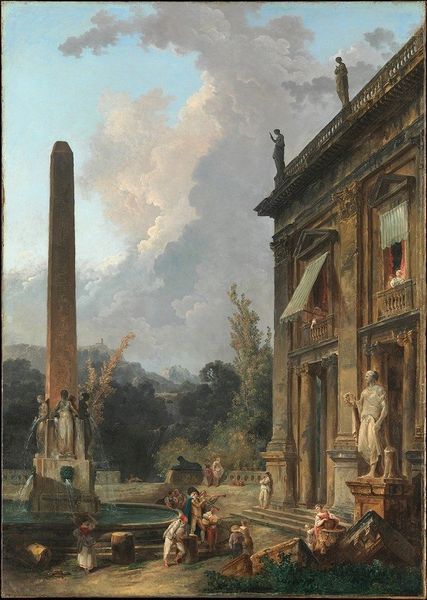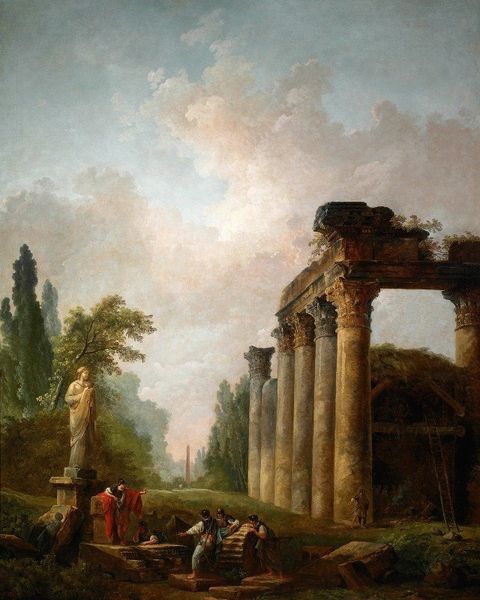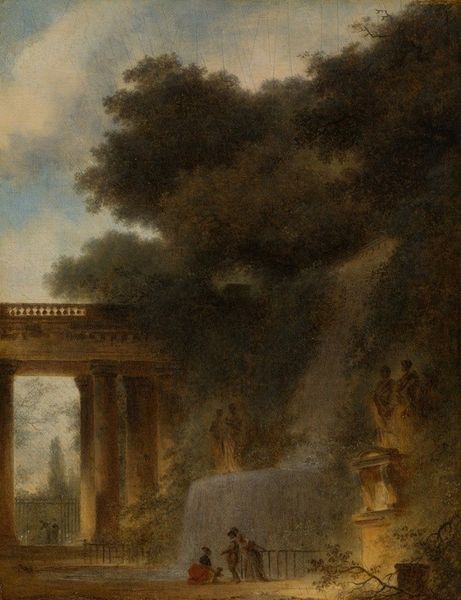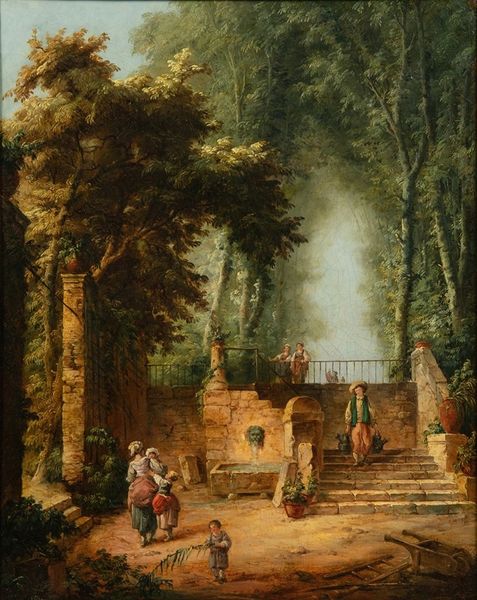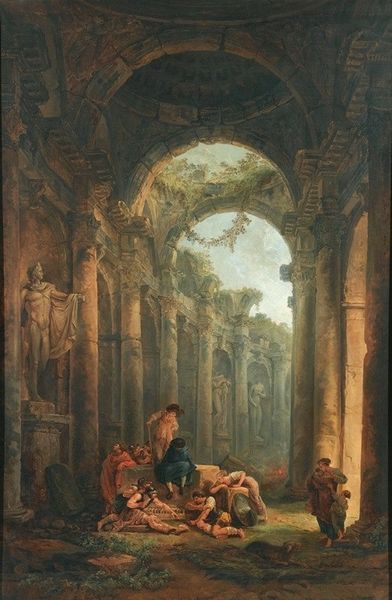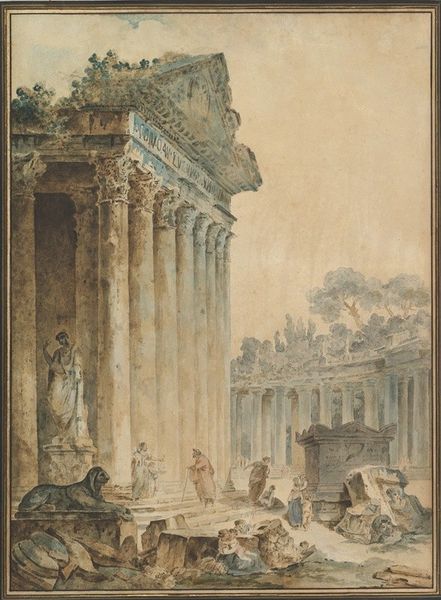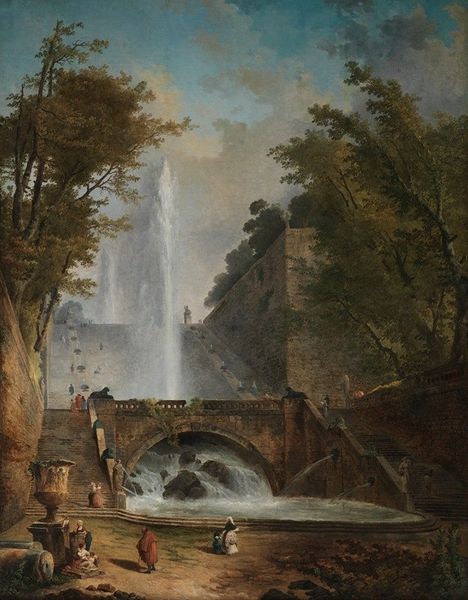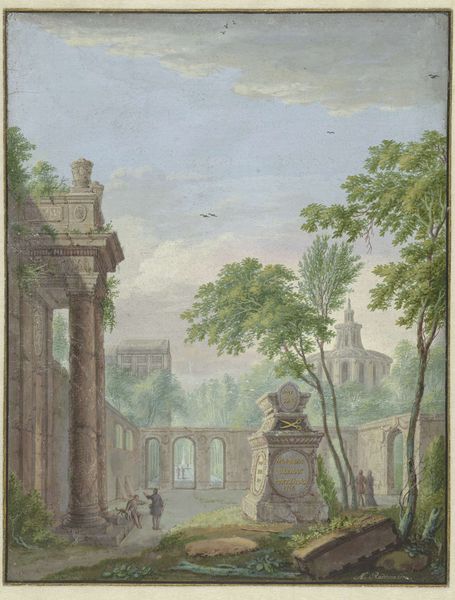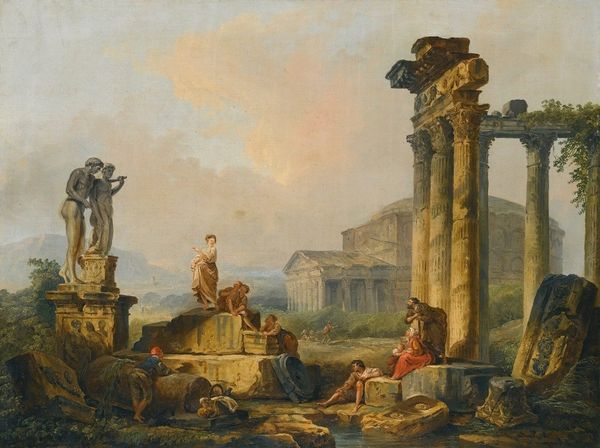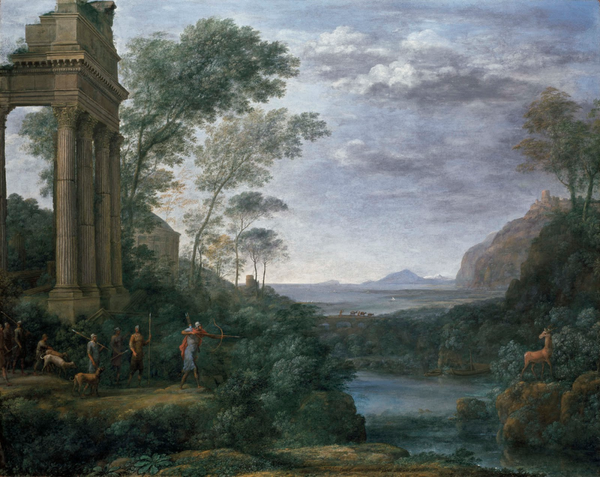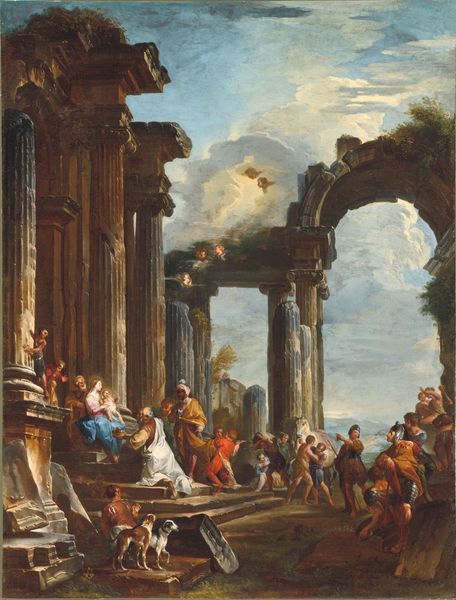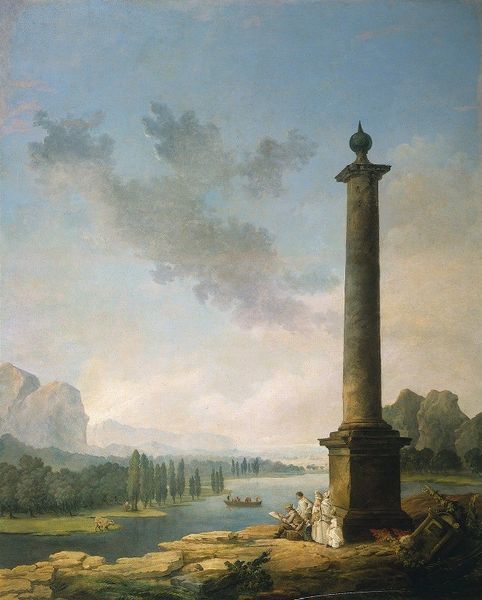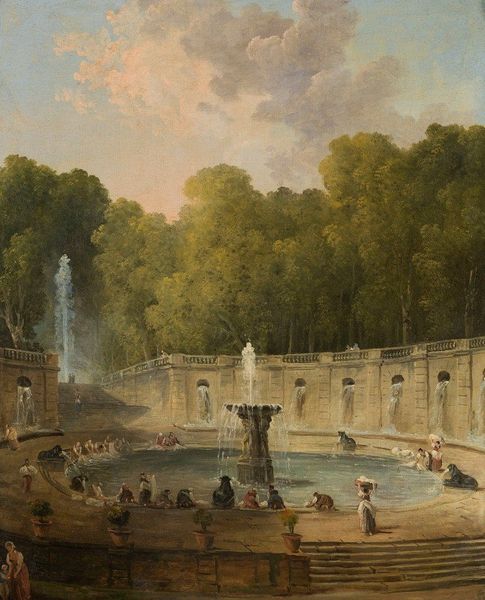
Copyright: Public Domain: Artvee
Curator: This is Hubert Robert’s "The Portico of a Country Mansion," created in 1773. Robert, of course, being known for his capriccios and romantic visions of architecture, both real and imagined. Editor: Immediately, the scene evokes a sense of leisure, but there's a melancholic quality, isn't there? The crumbling structure hints at the transience of even the most opulent settings. Curator: Absolutely. It is interesting to think about it as the enlightenment desire for classical inspiration within the rigid societal structures of pre-revolutionary France. These leisurely activities often reflected highly constrained societal rules and gendered expectations, with limited opportunities for marginalized communities to participate. Editor: And the light—soft, diffused. It brings out every little symbolic layer in the artwork: for instance, we see water which usually represents purity and renewal gushing from the fountain. In some traditions water may also represent feminine principle or emotional life. Does it point to Robert's intention to symbolize regeneration alongside inevitable decay? Curator: The use of watercolor contributes to that softness. The seemingly casual placement of figures – scattered along the steps and foreground – adds to that impression of idyllic, upper-class life in this period. These artworks can actually reinforce cultural norms and perpetuate inequalities when divorced from discussions of power, privilege, and marginalization. Editor: And those classical ruins, though picturesque, aren’t just about aesthetic appreciation, I think. The architecture, like a ruin can stand for what Carl Jung might call a collective unconscious – cultural memory inscribed in stone which invites both personal and communal remembering. They remind us of cycles. A nation-state comes into being, it prospers and it crumbles away and the collective has to remember and integrate. Curator: Right, by situating the artwork within its historical context, it allows viewers to become more self-aware of any positionality when faced with the artwork. And that could open new perspectives on art as not neutral or separate from political concerns, but something reflective of its culture of origin. Editor: This work invites contemplation beyond mere surface beauty. Exploring deeper, considering Robert’s era, one could contemplate cultural continuities, decay, and what the society values, generation after generation. Curator: It invites that consideration. Considering artworks such as these also enables reflection on current societal norms, which, too, shall be looked at through new lenses in the future.
Comments
No comments
Be the first to comment and join the conversation on the ultimate creative platform.
